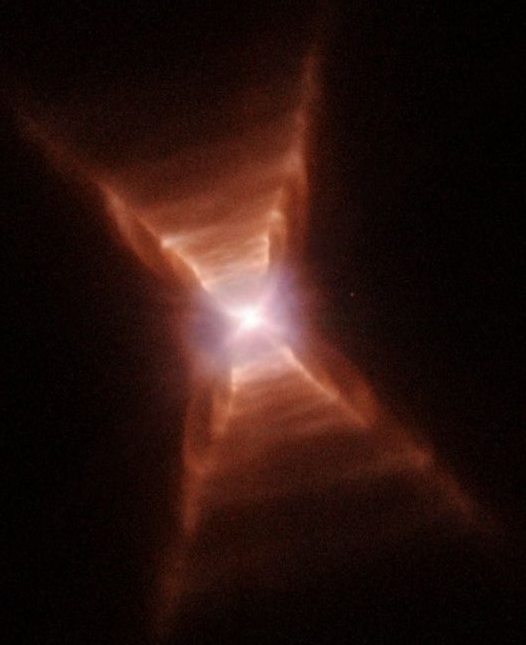The Red Rectangle |
|---|
The Red Rectangle |
|---|

This stunning image (right) of the Red Rectangle was taken with the Hubble Space Telescope , and shows the beautiful extended ladder-like rungs and curious X-shaped nebula surrounding this dying star. The star seems to be on its way to becoming a Planetary Nebula - so named because early astronomers found their fuzzy disks easy to confuse with real planets in our own solar system. However, these are much further away, formed from the remnants left over from a star's final glorious days as a Red Giant when it hurls a substantial fraction of its mass back into space.
But why do stars leave such good-looking corpses? What creates the X-shape and the rungs? With imaging from the Keck telescope (below), we have zoomed in on the very heart of the system. Here, at very high angular resolution, we can see the core of the Red Rectangle, and recognize the X-shaped spikes. Looks like we aren't working very hard? It all looks similar to the Hubble picture? But the interesting thing is the scale. We have zoomed in by a factor of 25, as illustrated in the images below.
At this magnification, we can finally see a dark band crossing the center of the X. This is an orbiting disk of gas and dust at the core of the Red Rectangle. The disk has an opening at the top and the bottom (yes - yet another doughnut ) which funnels the gas flowing out from the star. This acts like a double-sided nozzle, funnelling material into the twin-conical outflows which give the characteristic hourglass appearance.
|
|---|
This research was supported by grants from the
Australian Research Council
and the
US National Science Foundation
Stellar Astronomy and Astrophysics Program.
For more information, contact: Dr Peter Tuthill